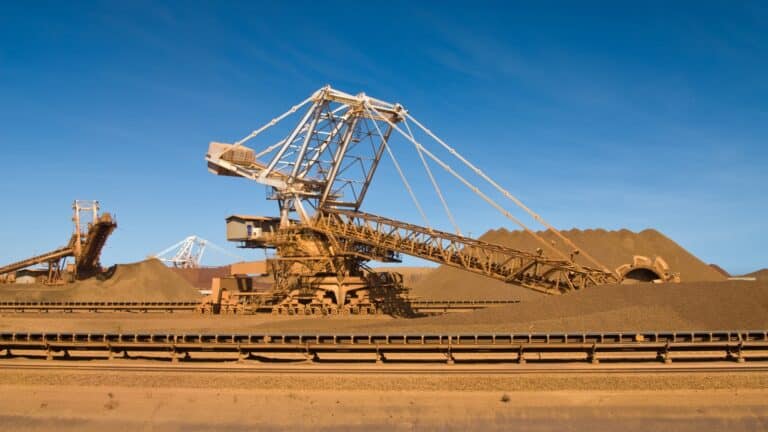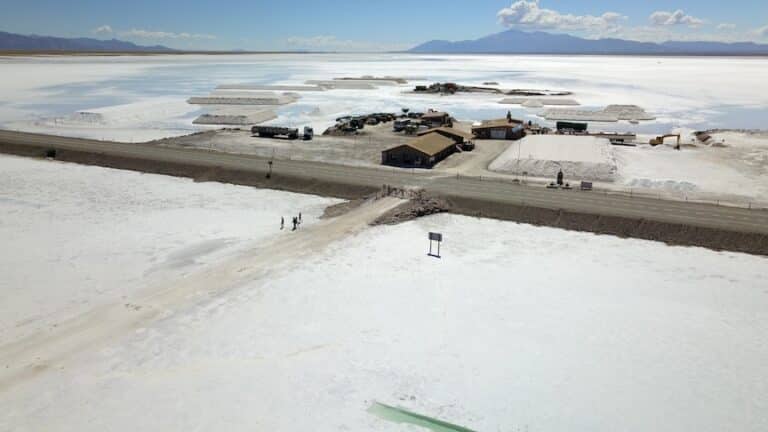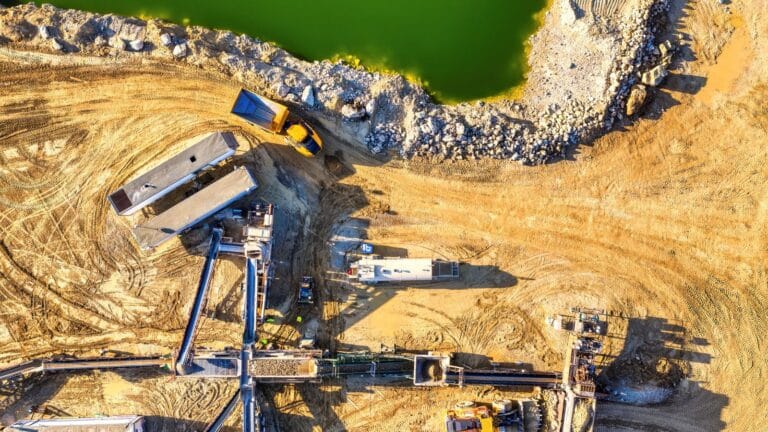This Energy Explained post represents the research and views of the author. It does not necessarily represent the views of the Center on Global Energy Policy. The piece may be subject to further revision. Contributions to SIPA for the benefit of CGEP are general use gifts, which gives the Center discretion in how it allocates these funds. Rare cases of sponsored projects are clearly indicated.
For a full list of financial supporters of the Center on Global Energy Policy at Columbia University SIPA, please visit our website at Our Partners. See below a list of members that are currently in CGEP’s Visionary Circle. This list is updated periodically.
The Chilean government recently published the results of a request for information (RFI) intended to gauge investment interest in the country’s lithium assets. Although details disclosed in the RFI results were sparse, this moment offers an opportunity to assess overall progress in the market, fifteen months after Chile announced its National Lithium Strategy to expand responsible lithium production. Implementation of the strategy to date has shown progress for existing projects in Atacama, but it remains unclear how Chile will create a globally competitive lithium industry with what seems like excessive state involvement.
Progress on National Lithium Strategy Goals
In April 2023, the Chilean government outlined a lithium strategy[1] with two main objectives: (1) increasing production in Chile’s only two active lithium operations of SQM and Albemarle in the Atacama Salt Flat, and (2) inviting new players to invest in other salt flats outside Atacama. In both scenarios, the government’s main goal was to control lithium operations, either directly or through state-owned enterprises (SOEs) such as Codelco and Enami.
Regarding the first objective, ongoing negotiations between SQM and Codelco to extend the current contract to produce lithium in Atacama beyond its 2030 expiration seem at this point very likely to materialize. A new company would be created between SQM and Codelco, which would control it, to expand lithium production and improve yields per volume of brine extracted.[2] There are no indications at this time that the contract between the Chilean state and Albemarle, which expires in 2043, will be modified.
For the second objective—that we will analyze in more depth in this piece—the government defined four categories of salt flats in March through the “Lithium and Salt Flats Committee Strategic Council”:[3] (1) a protected salt flats network that will not be open for development; (2) strategic salt flats including Atacama and Maricunga,[4] which need majority state participation through Codelco; (3) state-led salt flats, which need state participation involving Codelco or Enami but can have more flexible ownership structures; and (4) salt flats open to private participants, which will be subject to a tender process in which private companies can participate without SOE involvement. The government issued the recent RFI for this last category.[5]
Challenges and Concerns with the Strategy
The Chilean state aims to acquire and retain direct control over lithium production in the salt flats with the best lithium concentration and quality: Atacama and Maricunga. The government may be trying to hit two birds with one stone: maximizing the resource rents it captures and obtaining direct state control over lithium operations. However, these two objectives may not be as correlated as the government seems to expect. State revenue maximization could possibly be better achieved by attracting best-in-class private investment, increasing production, and charging the right combination of taxes and royalties. Public control, on the other hand, may end up reducing investment attractiveness in Chile compared to other countries such as Argentina, which is making efforts to become more business-friendly,[6] passing economic reforms that could reinvigorate private investment[7] and choosing a full private-sector approach for lithium, with large public incentives.
A second potential challenge is the possibility that this state-centric design—with Codelco and Enami as protagonists—will lead to lithium resource revenue being used to cover financial losses of these companies rather than being reinvested in building a globally competitive lithium sector. Codelco and Enami face substantial financial difficulties, with Codelco owing $20 billion and reporting losses of $591 million in 2023,[8] while Enami has incurred losses consistently since 2013, for a total of over $700 million.[9] This concern is critical because the government has allocated the most valuable resources to two companies that would be at serious risk of insolvency if they weren’t state-owned.
A third potential problem with the strategy is the legal uncertainty of new special contracts to produce lithium (CEOLs). In 1979, Chile declared lithium a strategic mineral not subject to mining concessions, meaning the owners of all mining concessions granted after 1979 had the right to explore (or exploit) all minerals in a certain block except lithium. If the government now gives a CEOL to a party different from the owner of the post-1979 concession, legal conflicts can arise. Such potential legal conflicts exist in most of Chile’s salt flats. For example, Enami started a process in February 2024 to invite a third party to jointly develop lithium in its Salares Altoandinos project.[10] Almost 30 companies expressed interest in the project, including the French Eramet that owns most of the post-1979 concessions in the area. Enami, and the government more broadly, have not yet come up with a plan to resolve the potential conflict that would arise if two parties—a newcomer with a CEOL to produce lithium and the incumbent with pre-existing rights over other minerals—claim their rights to develop mining operations in the same physical area.
Finally, excessive state intervention may hurt technological innovation rather than incentivize it. The National Lithium Strategy emphasized that the use of new production technologies with less environmental impact, such as direct lithium extraction (DLE), “should be an obligatory requirement.”[11] The problem is that the actual use of these technologies at an industrial scale is in its infancy, and its future development remains uncertain. Codelco’s $250 million investment in the Salar Blanco project has yet to clarify its position on DLE.[12] It would be difficult for the government to impose the DLE requirement on other players if its own public enterprises are not using it and instead continue to extract lithium by evaporating brine. The state could instead define clear, nondiscriminatory, and demanding but attainable environmental standards, and let companies pick the best technology to comply with them.
Results from the RFI and Recent Developments
The recently released RFI results provided only general information about the interested companies without specifically naming them. The government noted that most of the companies were Chilean, which means they don’t have significant lithium expertise since SQM is the only Chilean company with actual experience in lithium extraction. Potential interest from international companies is difficult to assess without knowing details about these companies’ expertise in lithium, financial resources available, and intention to deploy capital in Chile.
Given the challenges presented earlier, the government’s strategy to attract investment would likely benefit from four actions. First, the bidding processes can be open, competitive, and transparent to maximize competition and thus state benefits. Second, to address the conflicts between new lithium concessions and existing mineral rights, the government could design auctions to award CEOLs in a way that attracts new investors but fairly recognizes the value of existing mining rights.[13] Third, the government could reevaluate and clarify conditions imposed on companies, from the question of mandatory state control without investment to the obligatory use of DLE technologies. Fourth, it could limit ownership concentration, including by state and foreign interests, to maintain healthy competitive tension and geopolitical balance.
The Road Ahead
Implementation of Chile’s National Lithium Strategy has been slow. This pace might be justified if the country were building a state-of-the-art, globally competitive, and locally responsible lithium business, but that does not seem to be the case yet. Any further delays simply risk impeding investment and project development at a time when other lithium-rich countries are making good progress.
Any politicization of the lithium sector in Chile risks undermining the stability needed for long-term investments. Policies based on sound technical analyses and broad political support are essential to ensuring continuity across different administrations, which has been one of Chile’s strengths in the development of its copper empire. Such policies could maximize the value of Chile’s lithium for local communities, the country, and the global energy transition.
CGEP’s Visionary Circle
Corporate Partnerships
Occidental Petroleum Corporation
Tellurian Inc
Foundations and Individual Donors
Anonymous
Anonymous
the bedari collective
Jay Bernstein
Breakthrough Energy LLC
Children’s Investment Fund Foundation (CIFF)
Arjun Murti
Ray Rothrock
Kimberly and Scott Sheffield
[1]https://www.gob.cl/chileavanzaconlitio/#:~:text=Las%20acciones%20que%20componen%20la,tecnolog%C3%ADas%20de%20bajo%20impacto%20ambiental.
[2] https://www.codelco.com/codelco-y-sqm-firman-acuerdo-para-asociacion-que-da-a-chile-liderazgo-en.
[3] The Lithium and Salt Flats Committee Strategic Council groups five ministers (Mining, Foreign Affairs, Treasury, Economics, and Natural Resources and Environment) as well as the head of Chile’s Economic Development Agency.
[4]https://www.cochilco.cl/Mercado%20de%20Metales/Produccio%CC%81n%20y%20consumo%20de%20litio%20hacia%20el%202030%20edicio%CC%81n%202021%20versi%C3%B3n%20def.pdf.
[5] https://www.investchile.gob.cl/lithium-rfi-chile/.
[6] https://www.reuters.com/markets/commodities/global-lithium-sector-eyes-argentinas-salt-flats-tech-test-run-2024-07-10/
[7] https://source.benchmarkminerals.com/article/argentinas-economic-reform-bill-offers-copper-and-lithium-mining-incentives.
[8]https://www.codelco.com/sites/site/docs/20230502/20230502200138/operational_and_financial_report_december_31_fv.pdf.
[9]https://www.enami.cl/EnamiTransparente/B_EstadosFinancieros/Estados%20Financieros%20ENAMI%20y%20Filiales%20al%2031.12.23%20e%20Informe%20del%20Auditor%20(firmado).pdf.
[10] https://www.enami.cl/Noticias/Pages/30-empresas-y-consorcios-de-12-pa%C3%ADses-presentan-a-ENAMI-sus-tecnolog%C3%ADas-para-extracci%C3%B3n-directa-de-litio.aspx.
[11]https://www.gob.cl/litioporchile/en/#:~:text=The%20National%20Lithium%20Strategy%20is,in%20harmony%20with%20local%20communities.
[12] https://www.codelco.com/prensa/2024/junta-de-accionistas-de-lithium-power-international-aprueba-la-venta-de; for more details on this projects, see, for instance: https://lithiumpowerinternational.com/wp-content/uploads/2021/10/LPI-investor-presentation_October-2021-1.pdf.
[13] Auction theory could offer a good orientation.










